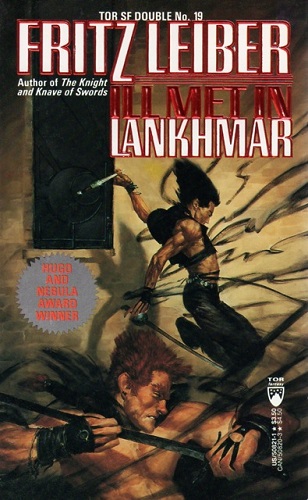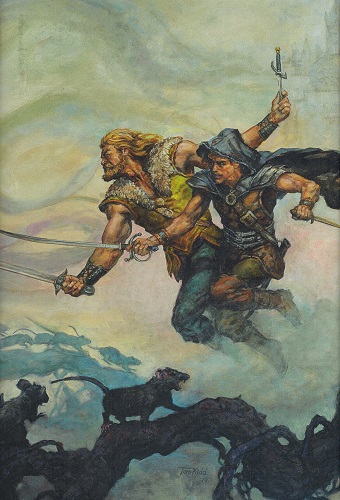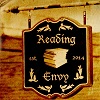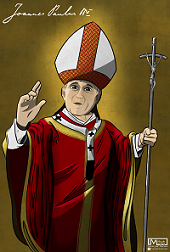This book has four stories in it:
“Induction” (1957) – a one-page story, and the first.
“The Snow Women” (1970) – about an 18 year-old Conan-esque Fafhrd, who lives in the wild and cold north but longs for civilization
“The Unholy Grail” (1963) – about a similarly aged Gray Mouser, who has been trained by a wizard who gives him that name.
“Ill Met in Lankhmar” (1970) – the story of the meeting of the two, in a city called Lankhmar.
There are lots of editions of this book out there. I was lucky to read it in a beautiful illustrated Centipede Press edition. The book is available on audio at Audible, read by Jonathan Davis, who is one of the best narrators out there. The audiobook as a whole there is $16, but as of this writing, you can buy “The Snow Women”, “The Unholy Grail”, and “Ill Met in Lankhmar” individually for $1.99 each.
I had read “Ill Met in Lankhmar” before, and felt lukewarm about it. “The Snow Women” was recommended to me, so I read that and was captured by it, just loved it. So I kept reading all the way through. Turns out that the stories before “Ill Met” provide a context that I didn’t know I was missing. I thoroughly enjoyed re-reading “Ill Met in Lankhmar” too.
The stories are in the Sword and Sorcery subgenre. Leiber may have coined that term. I’m learning some about the subgenre from Brian Murphy’s Flame and Crimson: A History of Sword and Sorcery. Murphy wrote a good section in that book which discusses Leiber’s influences and gives an overview of the whole series. He also shows the place the series holds in the history of the genre.
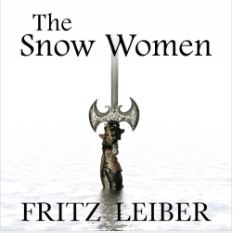
“The Snow Women” recalled Gilgamesh to me. Gilgamesh was from civilization, his friend Enkidu was wild. Fafhrd, 18 years old, is a kid very comfortable in the wild. He climbs a tree to get to the place where he stashes his stuff. He runs on the snow without difficulty. Yet he longs for civilization. Is this frozen tundra all there is? This strong feeling makes him fall for Vlana, a person he sees as civilized, despite his pregnant girlfriend. Ironic that in the pursuit of civilization, he rejects the civilized choice to stay with his family.
The Gray Mouser is introduced in “The Unholy Grail”. We meet him having already been trained as a wizard by Glavas Rho. He was called a mouse because of his stature, and gray because he didn’t embrace the light or the dark, but used each as needed. He changed “mouse” to “mouser” because due to events in this story, he no longer wanted to be the hunted – he became the hunter. There’s an extraordinary scene in this story of the Gray Mouser captured and on the torture rack.
And then “Ill Met in Lankhmar”. This tells the story of the two men’s first meeting. They individually attack a pair of thieves at the same moment, then, recognizing something deep inside the other, decide to split the loot “sixty-sixty” rather than fight it out between them. Again this brings the deep friendship of Gilgamesh and Enkidu to my mind. Then comes excessive drink, some questionable decision making, and tragedy.
There are seven books in this Sword and Sorcery series. I haven’t read any of the others yet. It appears that these stories, written in 1963 and 1970, are a prequel. Fafhrd and the Gray Mouser have stories that were written from 1939 through the early 1980’s.
